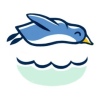|
|
 |
|
|||||||
 |
|
|
|||||||
|
|||||||||
|
|
 |
|
|||||||
 |
|
|
|||||||
|
|||||||||
Using Alpha Masks to Block Areas
| If you
haven't worked much with digital imaging before, here's something that
might be a feature that's new for you: the Alpha channel. In some applications, it's called the selection mask. The purpose is to be able to select or deselect pixels, so as to make them eligible for painting, or to the contrary, block them from changing colors. They're also used to indicate what can be erased, or copied, pasted to, etc. A selection of pixels is usually shown in the form of marching ants. You can read more about Alpha in the PD Help documentation |
|
| In this
first example here, you might think at first look that we simply
painted a few brushes of paint and particle shrubbery, and then
stomped the text over it. While that could achive the same result
in many cases, we actually did it the other way around. First, we switched to a drawing mode that paints to Alpha. Then we enabled the Text tool and typed the text, set the font style and size, and eventually clicked 'Make Brush', so as to send the text to the brush. Note that we could have applied the text into the alpha channel directly from the Text tool (not available in v1.2), but we wanted to first rotate the text, so that's why we loaded it into a brush, and then we selected Brush>Store/Manage... and applied a rotation to the brush. Or we could have rotated it from Brush>Rotate... Now we stomped the rotated brush into the buffer, and switched back to painting normally. The stomped brush (text) thus got transferred into Alpha, and the rotated selection mask became active in the alpha channel. You can still see the marching ants in this snapshot (dashed outlines around the text). |
 |
| After setting up the
alpha mask, we could have inverted it to enabled painting inside the
text. In this case however we left it for painting on the outside. We
used a
Tick Oil brush from the built-in brushes, and painted the yellow and
green base. Then we enabled Optipustics particle brushes and selected
the grass preset Settings. We painted a few strokes and the grass
appeared on the outside of the text, but didn't enter the inner side of
the text, because that's where the alpha channel blocks it. |
|
In the second example, the Text was applied directly to Alpha, without the need for rotation, but then a Blur Alpha effect was applied, in order to smoothen the transition from disabled (blocked) pixels outside the selection to pixels which are free to change color inside the selection. You can see that the particle effects don't turn invisible suddenly. Instead they transition gradually from on to off. In this case the full enabled pixels are on the inside of the alpha text region. |
 |
| Alpha can be used for other
effects. a Glow effect can be generated around the alpha channel
selection region. A shadow drop can also be generated, and even an
embossing by alpha is possible. Alpha can grow or shrink to the outside
or inside, respectively. It can be blurred, inverted etc...Make alpha
your friend, and you'll be cool. |
 |
| You can also use alpha masks to
'see' a movie clip through it. See for example the Dino animations examples.
|
|